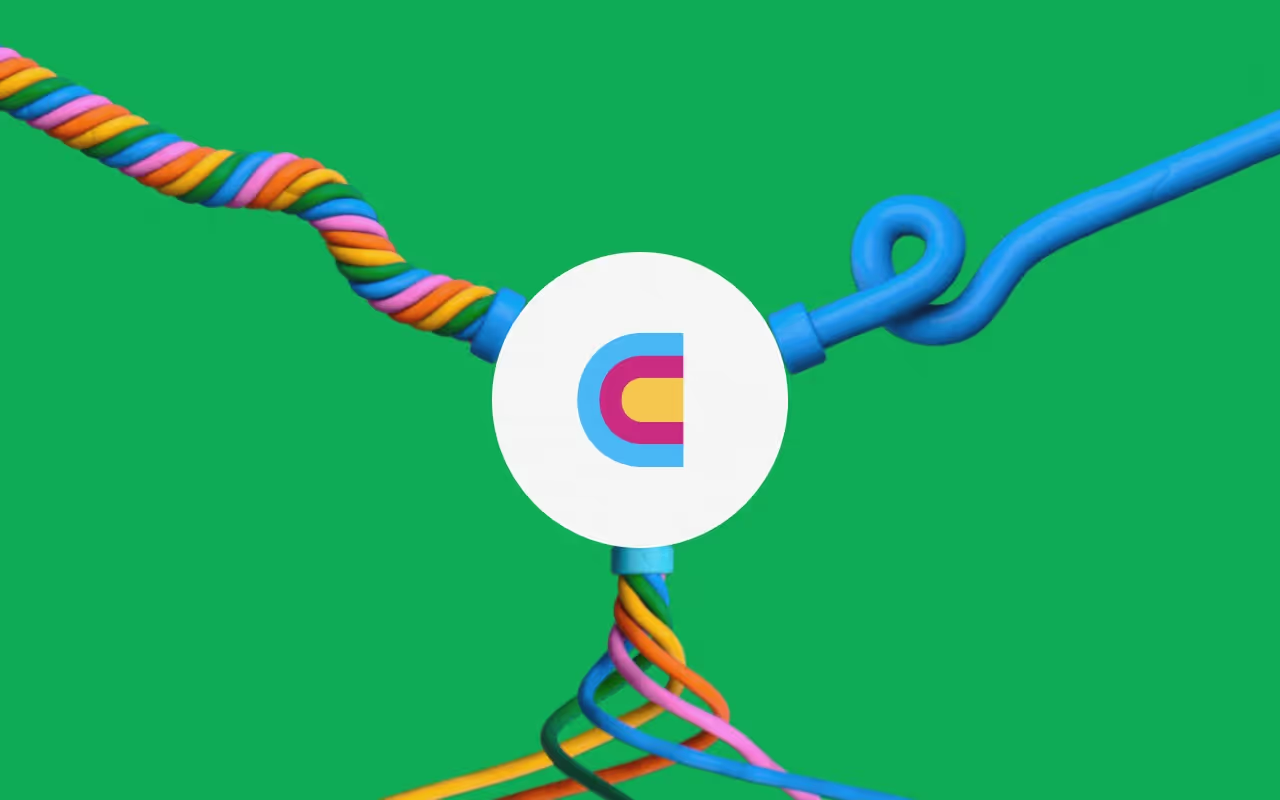🔍 Third-Party Scrapers: Accessing Hidden Market Intelligence
Introduction
Previously, we covered advanced TAM sourcing techniques using Clay's native capabilities. Today, we're expanding your toolkit with third-party scrapers like Apify and Phantombuster to access data sources that traditional B2B providers simply can't reach.
By the end of this lesson, you'll know exactly when and how to use these powerful tools to build comprehensive TAM databases from virtually any corner of the internet, creating competitive advantages through unique market intelligence.
🔍 The Gaps in Traditional B2B Data
Traditional B2B data providers like ZoomInfo and Apollo excel at capturing enterprise companies with strong digital footprints, active LinkedIn presence, and structured business profiles. But they systematically miss entire market segments that could be goldmines for your business.
Think about local businesses like restaurants, medical practices, and retail stores. These companies often have minimal LinkedIn presence but significant revenue potential. They're running successful operations with real budgets but remain invisible in standard B2B databases.
Consider niche industries with specialized directories, geographic markets with region-specific business listings, and real-time signals like job postings, product launches, or pricing changes that indicate immediate buying opportunities. Traditional providers update quarterly or monthly, far too slow to capitalize on these timing-sensitive signals.
🌐 The Untapped Data Universe
The internet contains far more business data than any single provider can capture or commercialize. Every industry has its own ecosystem of information sources that traditional aggregators don't touch.
Review sites like Yelp, G2, and Capterra contain thousands of businesses with rich behavioral data that traditional firmographic databases can't provide.
The challenge isn't necessarily finding this data but collecting it systematically and at scale. Manual copying from websites doesn't scale beyond a handful of prospects. That's where tools like Apify, Phantombuster, and Chrome scrapers provide the infrastructure for systematic data collection.
⚡ Apify: Systematic Web Data Collection
Apify is the most powerful option for systematic data collection from virtually any website, turning unstructured web pages into structured datasets you can analyze and enrich.
The Actor Library
Apify's library contains over 2,000 pre-built actors, ready-made scrapers optimized for popular platforms. Want to scrape Instagram business profiles for follower counts and engagement rates? There's an actor for that. Need company data from LinkedIn including employee counts and recent posts? There's an actor for that too.
This extensive library means you rarely need to build scrapers from scratch.
Practical Restaurant POS Example
Here's a concrete example demonstrating Apify's TAM expansion power. Say you're targeting local restaurants for point-of-sale software. Traditional B2B providers might give you 20% market coverage because most independent restaurants don't appear in business databases.
With Apify, you can scrape Yelp for restaurants in specific zip codes, extract contact information, revenue estimates based on review volume and pricing, and review sentiment data revealing operational pain points. This approach provides 90% market coverage with rich behavioral data showing which restaurants struggle with service speed or order accuracy—perfect indicators they need better POS systems.
Apify: Setup and Configuration
Here's the step-by-step setup process:
Step 1: Create Your Apify Account and browse their actor library to find scrapers matching your data needs. Each actor targets specific platforms—Instagram Business Scraper, Google Maps Scraper, LinkedIn Company Scraper, and hundreds more specialized options.
Step 2: Configure Your Actor by clicking "Create Task" to add it to your library of actors, which Clay will be able to access directly. Switch the input format from Manual to JSON mode and copy the body text—this becomes your input data structure in Clay.
Step 3: Connect to Clay by navigating to Actions → Run Apify Actor. Select the task you just created in Apify and paste the JSON configuration under "Input Data" to define what the scraper should collect.
🎯 Building GTM Alpha Through Creative Data Collection
Let's examine how creative scraping strategies create genuine competitive advantages that traditional prospecting can't match.
The E-Commerce Marketing Agency Example
Say you're a marketing agency trying to target e-commerce brands. The standard approach is searching for mid-sized e-commerce companies in traditional B2B databases. You get the exact same list as every competitor, leading to identical outreach that prospects have seen dozens of times.
Generic data leads to generic outreach, which leads to terrible response rates and commoditized positioning.
The Strategic Insight
But here's a valuable insight: Brands with huge social followings but low website engagement are essentially signaling "We have marketing budget and audience but need help with conversion optimization."
This represents your perfect prospect: they've proven they can build an audience but struggle to monetize it. The challenge is systematically identifying these businesses when traditional databases don't track this behavioral mismatch.
The Clay Apify Workflow
Here's how to build competitive advantage through creative data collection:
Step 1: Social Following Discovery - Use Instagram Business Scraper to find brands with 50K+ followers in your target industry.
Step 2: Website Performance Analysis - Use Similarweb Scraper to check their websites for in-depth traffic data—visit counts, session duration, bounce rates, and traffic sources to detect any conversion gaps.
Step 3: Intelligent Outreach - Use Clay's AI to compose personalized copy referencing specific data points you've discovered about their business.
The Messaging Advantage
Instead of generic outreach like "Hi, I help e-commerce brands increase sales," you open with specific, relevant insights:
"Hey, I noticed your Instagram has 75K engaged followers but your site traffic shows average session time under 30 seconds with 80% bounce rate. That seems unusually low for your category and follower engagement—are you seeing issues with cart abandonment or product discovery flow?"
This approach demonstrates you've done meaningful research and understand their specific challenge.
That's GTM alpha: not just better execution of standard approaches, but finding hidden opportunities and insights your competitors systematically miss.
🤖 Phantombuster: Social Media Intelligence
While Apify focuses on web scraping, Phantombuster specializes in social media automation and data extraction with capabilities that go beyond simple scraping.
Social Platform Expertise
Phantombuster excels at LinkedIn prospecting with connection automation, Instagram business discovery through engagement patterns, and Twitter audience analysis identifying influential conversations.
Behavioral Mimicry
Phantombuster's key advantage is mimicking human behavior on social platforms rather than just extracting static data. It can interact with content—liking posts, following accounts, sending connection requests—while systematically extracting engagement data and relationship networks.
For TAM sourcing, this means identifying prospects based on social behavior patterns, not just static company profiles:
- Companies actively engaging with competitors' content (showing awareness and interest)
- Businesses posting about specific challenges your solution solves (revealing pain points)
- Prospects following industry thought leaders (indicating investment in staying current)
- Organizations sharing content about industry trends (showing strategic thinking)
🔧 Chrome Scrapers: Maximum Flexibility
Chrome scrapers offer the most flexible option for custom data collection from specialized sources without pre-built tooling.
Complete Customization
These browser extensions extract data from any website you visit, providing complete customization for unique data sources. Scrape data from proprietary industry databases, member-only directories accessible through your login credentials, or any website without pre-built scrapers available in Apify's library.
The trade-off is manual effort compared to automated scrapers. While Apify and Phantombuster run automatically once configured, Chrome scrapers typically require navigating to each page manually while the extension captures structured data.
High-Value, Low-Volume Use Cases
For high-value, low-volume data sources, this manual approach can be absolutely worth the effort. Think about scraping a specialized industry directory with 500 perfect-fit prospects that no competitor can access because it requires industry association membership.
⚖️ Legal and Compliance Considerations
Web scraping exists in a legal gray area that varies by jurisdiction and specific website terms of service. Understanding and respecting these boundaries is essential for sustainable data collection practices.
General Principles
The fundamental principle: publicly available data can typically be scraped for business purposes, but you must respect rate limits, robots.txt files, and terms of service that websites publish.
Key Guidelines
Always check website terms of service before scraping to understand any explicit prohibitions or requirements. Many sites allow reasonable data collection but prohibit bulk downloading or commercial resale.
Use reasonable delays between requests to avoid overloading servers or appearing as malicious traffic.
Don't scrape personal data without proper consent and legal basis. Focus on publicly available business information rather than personal contact details that may be protected.
Respect robots.txt files that websites use to communicate which parts of their site should or shouldn't be accessed by automated tools.
💡 Best Practices
Success with third-party scrapers comes from starting small and scaling systematically rather than attempting to scrape everything at once.
Validation Before Scale
Test with small datasets first to validate data quality, confirm compliance with terms of service, and ensure the scraped data actually provides the insights you expected.
Strategic Focus
Focus on data sources that provide genuine competitive advantage rather than scraping indiscriminately. Don't scrape data just because you can—scrape data because it gives you access to prospects, behavioral insights, or timing signals your competitors can't easily replicate.
✅ Key Takeaways
Third-party scrapers like Apify, Phantombuster, and Chrome extensions provide access to market intelligence that traditional B2B data providers systematically miss. This includes local businesses, niche industries, specialized directories, and real-time behavioral signals.
Apify's 2,000+ pre-built actors enable systematic data collection from virtually any website without custom development. Phantombuster specializes in social media intelligence and behavioral targeting. Chrome scrapers offer maximum flexibility for specialized, high-value data sources.
Combining scraped data with traditional enrichment helps achieve coverage and depth impossible with any single source.
Legal and ethical scraping requires respecting terms of service, rate limiting, and focusing on publicly available business information. Start small, validate quality, and scale thoughtfully based on genuine competitive advantage.
Connect, explore and learn together
Read our GTM blog, or try out our top Claybooks and templates to transform your growth ideas into outreach in minutes.





















